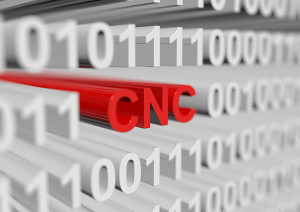As I often visit metal fabrication shops it is amazing to see the myriad of CNC control interfaces, not only from different equipment manufacturers, but also how they have physically changed over the years. But it’s not just the physicality of the change, but how their functionality has also changed.

A closer look at the capabilities and features of the CNC control interface is essential when considering new equipment.
Many control interfaces on early fabrication CNC equipment evolved from early CNC machining center interfaces. These control interfaces had small screen displays which were usually monochrome and there were lots of switches, dials and keyboard buttons covering the entire control panel. If you were lucky enough you worked with a DNC or serial communications program to download the programs to the control or, if you were not so fortunate, you had to deal with the dreaded rolls of punch tape that had to be manually loaded into the control.
to evolve with modern communications and color displays, their physicality has not really changed much. They still use large panels, large clusters of function buttons, override switches and dials, and a relatively small display screen. Their operating platforms have remained mostly proprietary and not open to running modern operating platforms that have since enabled a host of new features for Human Machine Interface (HMI), future Industry 4.0 and Industrial Internet of Things (IIoT) capabilities.
Modern CNC Interfaces
Modern operating systems have enabled compatibility with HD touch screen displays, Ethernet networks, Bluetooth and USB communications, soft button technology, remote access and video monitoring via the internet, and much more. The HD touch screen resembles the interface most widely used by nearly everyone on a daily basis: the modern smart phones and tablets available on the market today.
The results are stunning: not only is the interface completely touch screen, it has eliminated all of the dials, switches and physical push buttons still in use by the legacy machining controls. The touch screens now encompass the entire panel and are up to 22–inches for displaying vivid HD graphics, providing a comfortable operating platform for the operators. The learning curve is much shorter with the modern HMI’s and because the interface is intuitive and easy to operate. Set-up times are much shorter.
Preparing for the Future
Customers tell me you can now hire someone with little-to-no CNC control experience and teach them to operate the touch screen interface in a couple of hours… and they are already productive on their first day. This is in large part because they are so used to using a similar interface for their consumer electronics, touch screens and soft buttons, that it becomes second nature for them.
In the future if companies want to continue to attract new employees to operate their CNC equipment and also have them be productive from day one, a closer look at the capabilities and features of the CNC control interface is essential when considering new equipment.
By Frank Arteaga, Head of Product Marketing, NAFTA Region
Bystronic Inc., Elgin, IL – Voice.bystronic@bystronic.com
